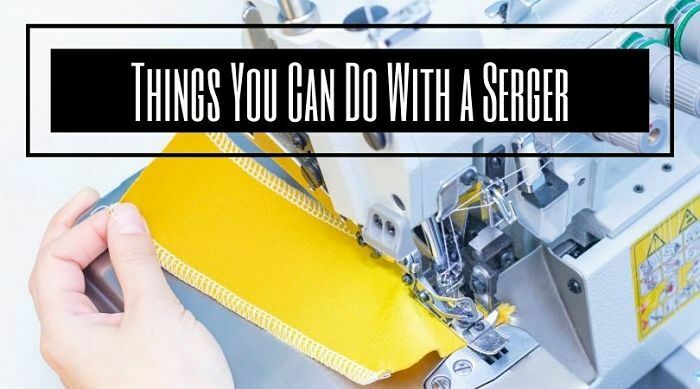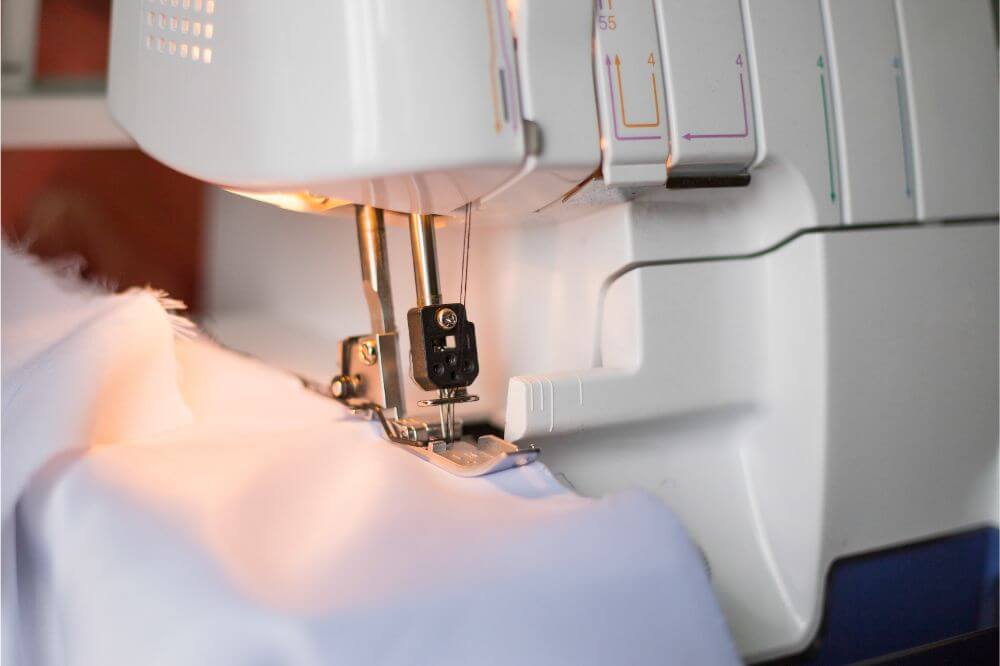Things You Can Do With a Serger
Most people would consider sergers to be specialized sewing machines. However, there are many differences between sergers and sewing machines, something we will address.
However, what we really want to discuss is things you can do with a serger, and we will take a closer look at the jobs a serger can do.
What Is a Serger?
A serger is a specialized sewing machine. Its primary purpose is to simultaneously sew a seam closed while stitching over the edge of the seam allowance.
Most sergers come with blades that trim off the additional seam allowance. Therefore, a serger is designed to create perfect seams, like factory-made.
These machines are also called overlock machines or overlock sergers because they use a particular stitch type – the overlock stitch. A standard sewing machine uses a lock stitch, topstitch, or chain stitch.
So, for most professional projects, you will need both machines. In addition, you will need a sewing machine’s topstitch/lock stitch capabilities; you will also need the overlock stitch capabilities of a serger for edges, seams, and hems.
A serger generally has anywhere from 3 to 8 thread cones, with the majority having 3, 4, or 5, which means that sergers can use many threads at once to create some truly intricate hems and seams. A serger’s number of stitch patterns is astounding.
Remember that sergers sew only in one direction, forward, unlike most sewing machines which you can throw in reverse and sew in both directions. So this is not something that you can do with a serger.
Things You Can do with a Serger
Now that you know what a serger is let’s look at some of the things you can do with these specialized machines.
Overcasting Raw Edges
One everyday use of a serger machine is to overcast raw edges, especially if you are working with a single layer of material. For example, working with hems or facings, you will often want to overcast a raw edge.
This is best done with a three thread overcast which involves skimming the raw edge of the fabric with the serger blades. The result is a good-looking, smooth, and perfect edge.
Finishing Seams in a Single Pass
One of the most significant benefits of these machines is that you can trim a seam allowance, overcast, and edge, and sew a seam in a single step. First, you would cut the fabric manually and then sew the seam with a basic sewing machine.
Overcasting an edge with a standard sewing machine is not easy. However, instead of multiple tedious steps to finish a seam, a serger can do all three things simultaneously.
Making Flatlock Seams
In addition, a serger can create flatlock seams, which are totally flat, are reversible, and have no seam allowance. They are nice decorative seams.
They can also allow for a bit of color blocking. Flatlock seams are ideal for professional garments and upholstery. This is a kind of seam that you can’t really create using a standard sewing machine.
Easy Rolled Hems
Yet another job a serger can do is create quick and easily rolled hems. Rolled hems are very common whether talking about bridal veils, sleeves, pant legs, or napkins.
Sergers have special pins that fabric rolls around. Once the fabric rolls around that pin, the needles will encase the rolled hem in thread.
Sergers are also ideal for hemming in the round, such as sleeves and pant legs. In addition, these machines make it easy to create rolled hems on corners.
Controlling Stretching and Puckering
The other main benefit or use of a serger is to work on materials that easily stretch or pucker. Sergers usually have differential feed dogs, so you can adjust their speed ratio.
You can turn the ratio up to loosen stretching fabric or turn it down to tighten and stretch fabrics that pucker. Working on fabrics that stretch or pucker is easier with a serger than a sewing machine.
Conclusion
As you can see, sergers have many functions and uses, things that standard sewing machines just cannot do.


